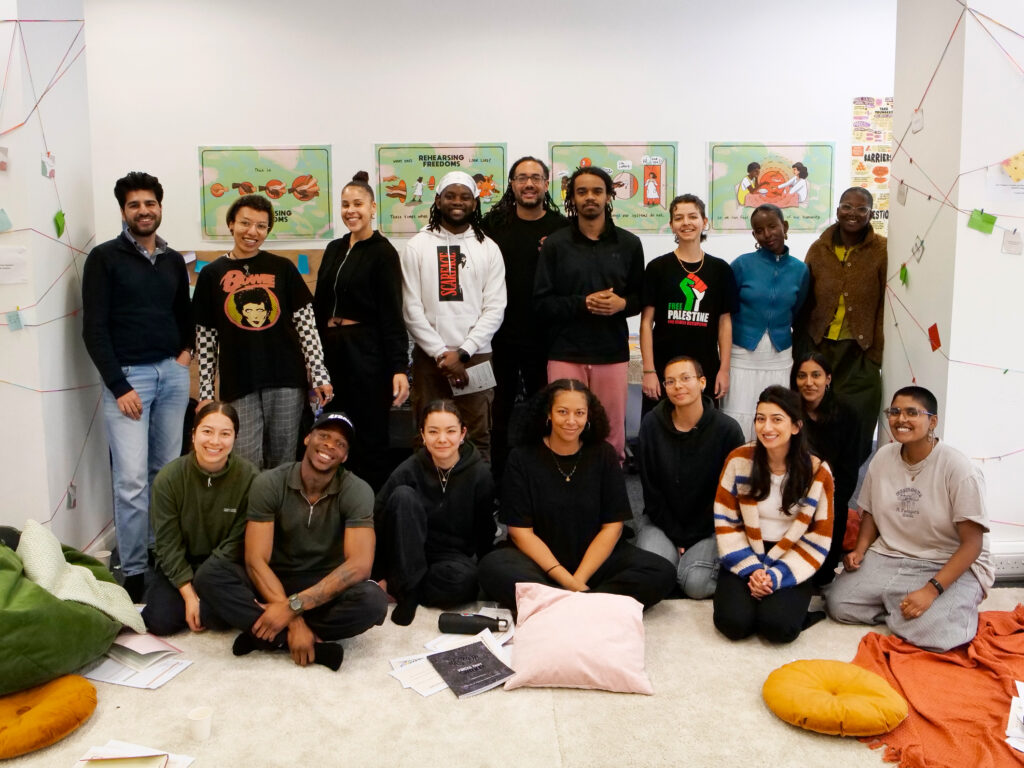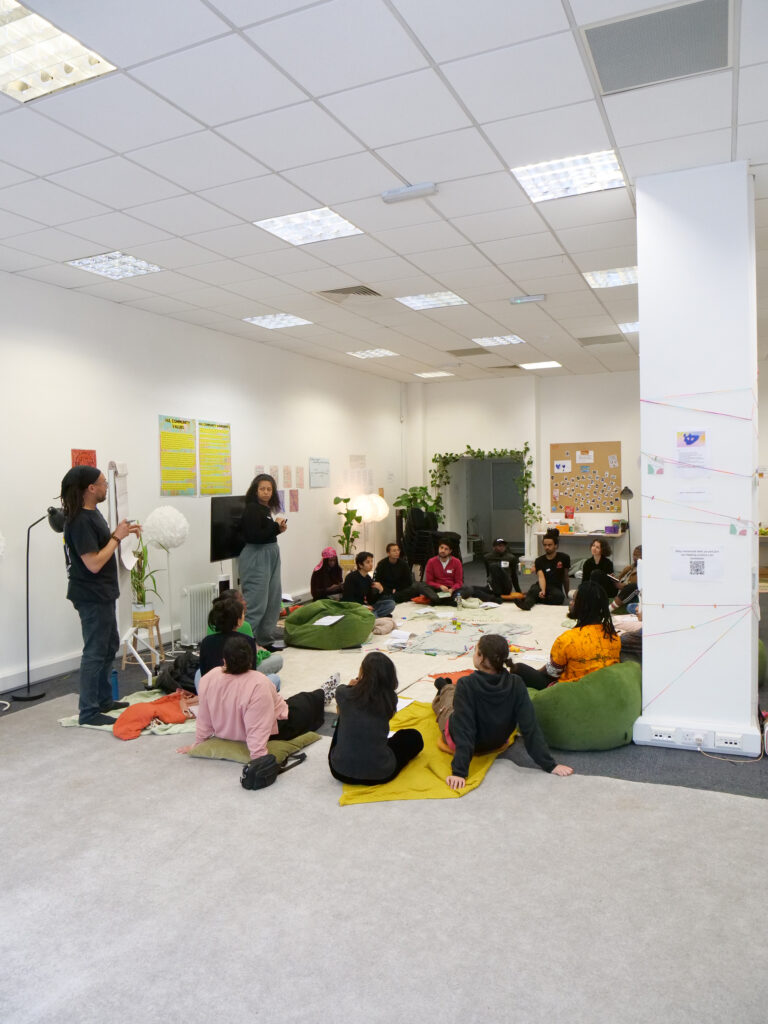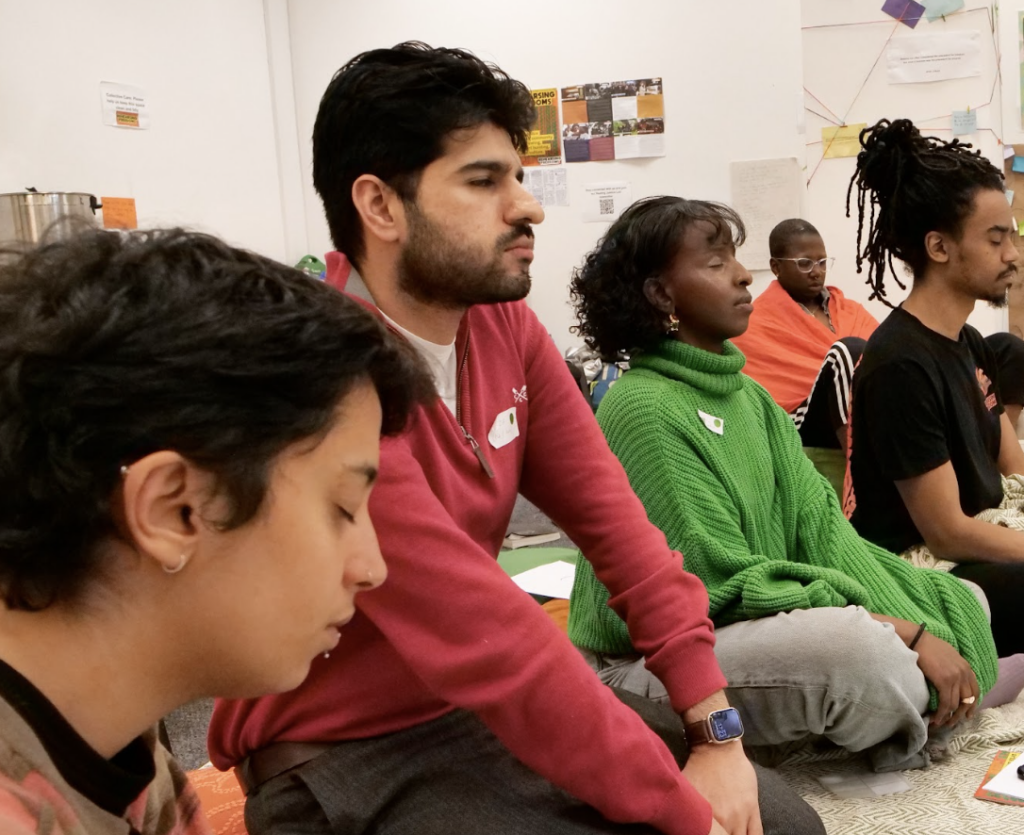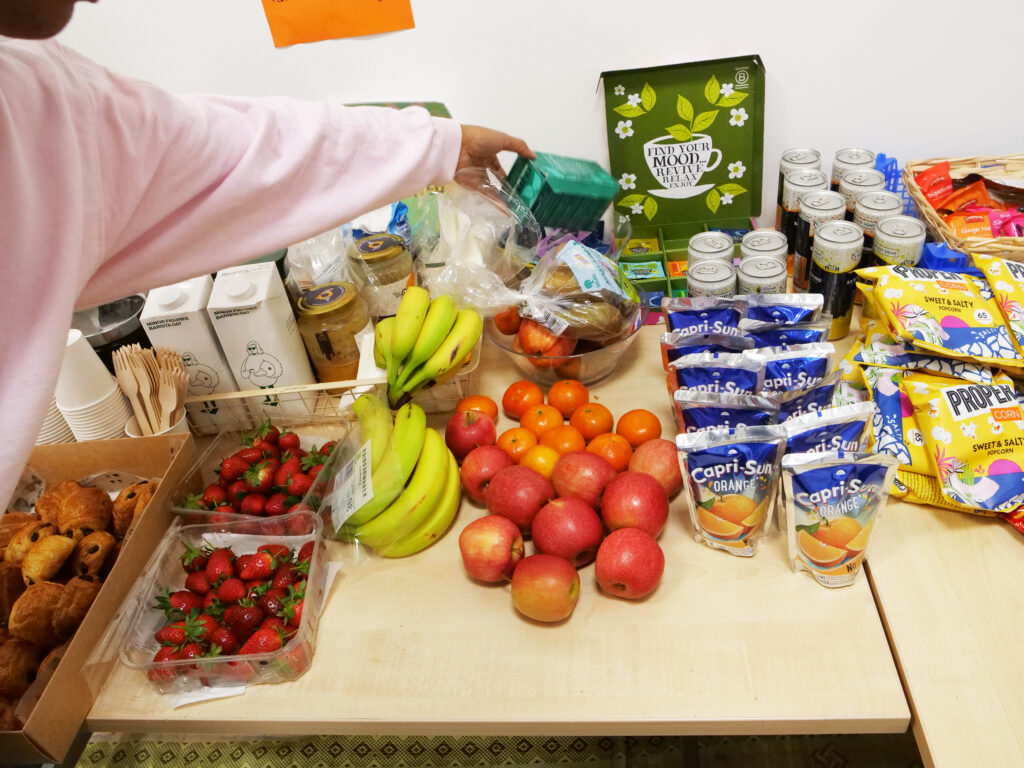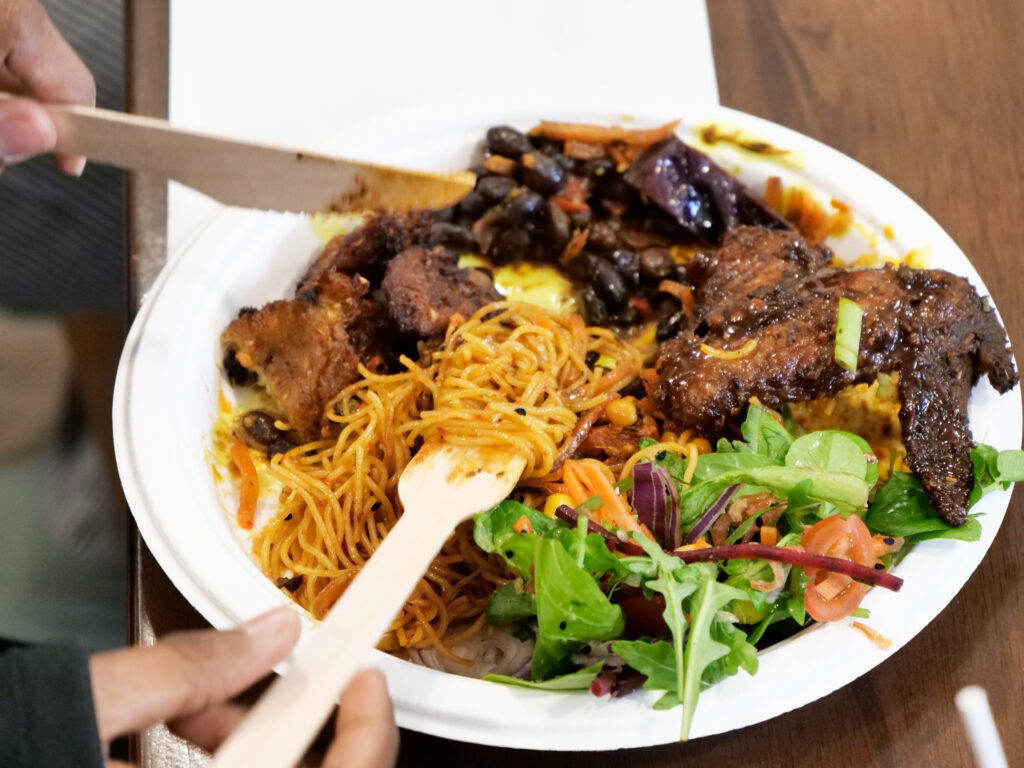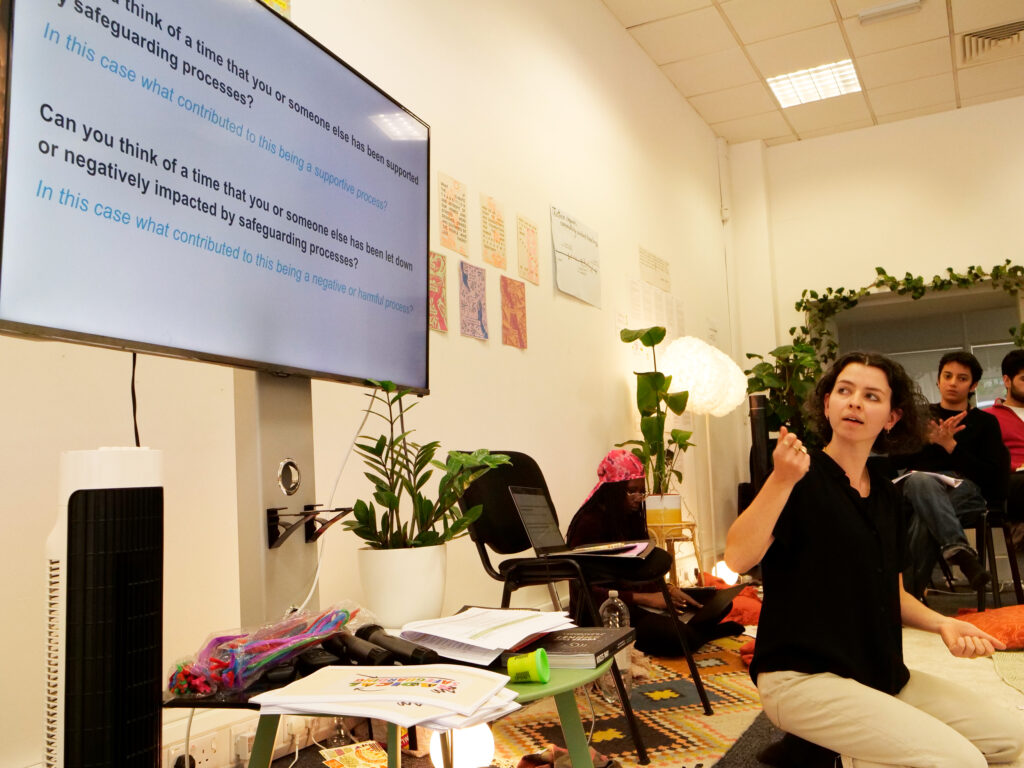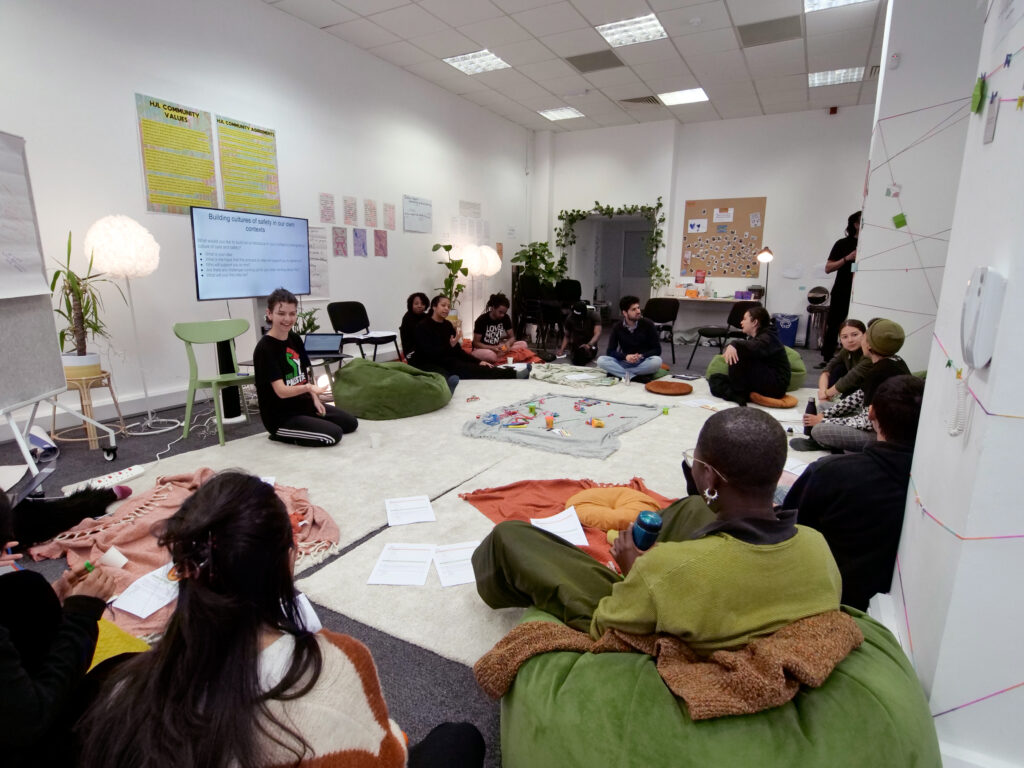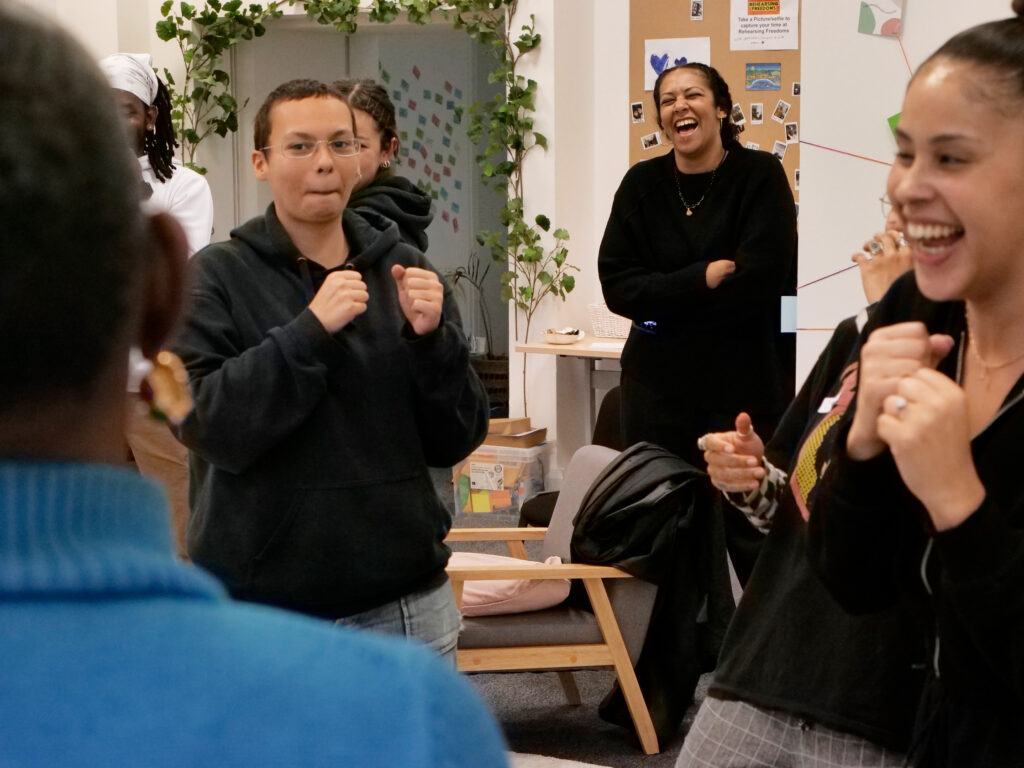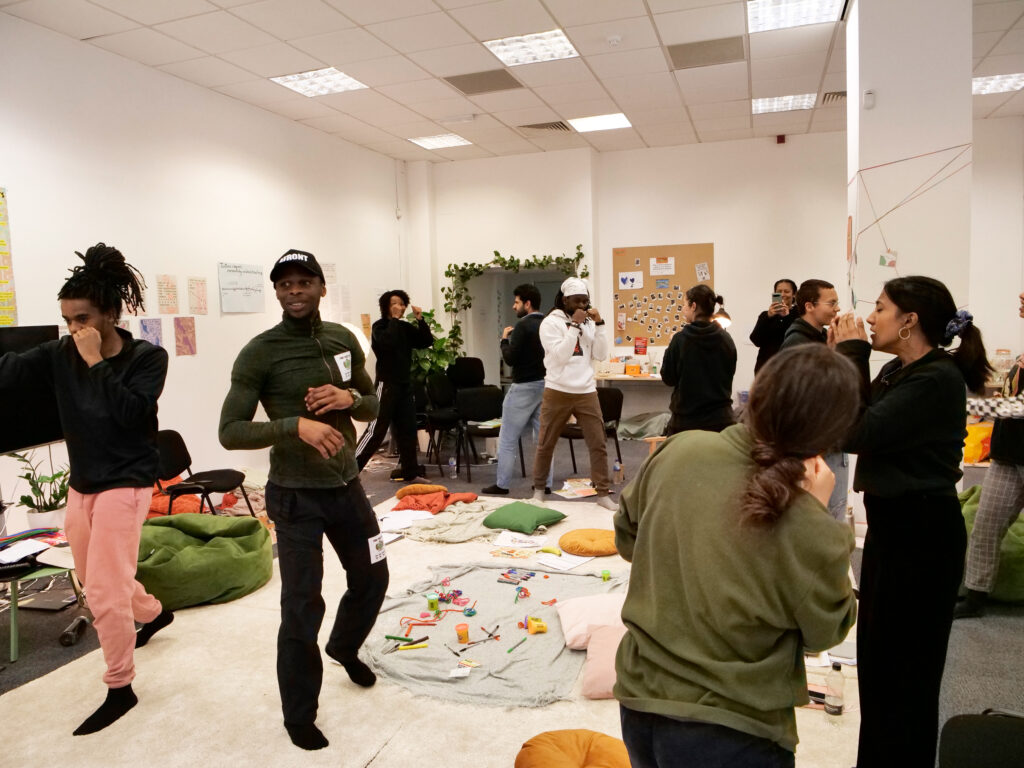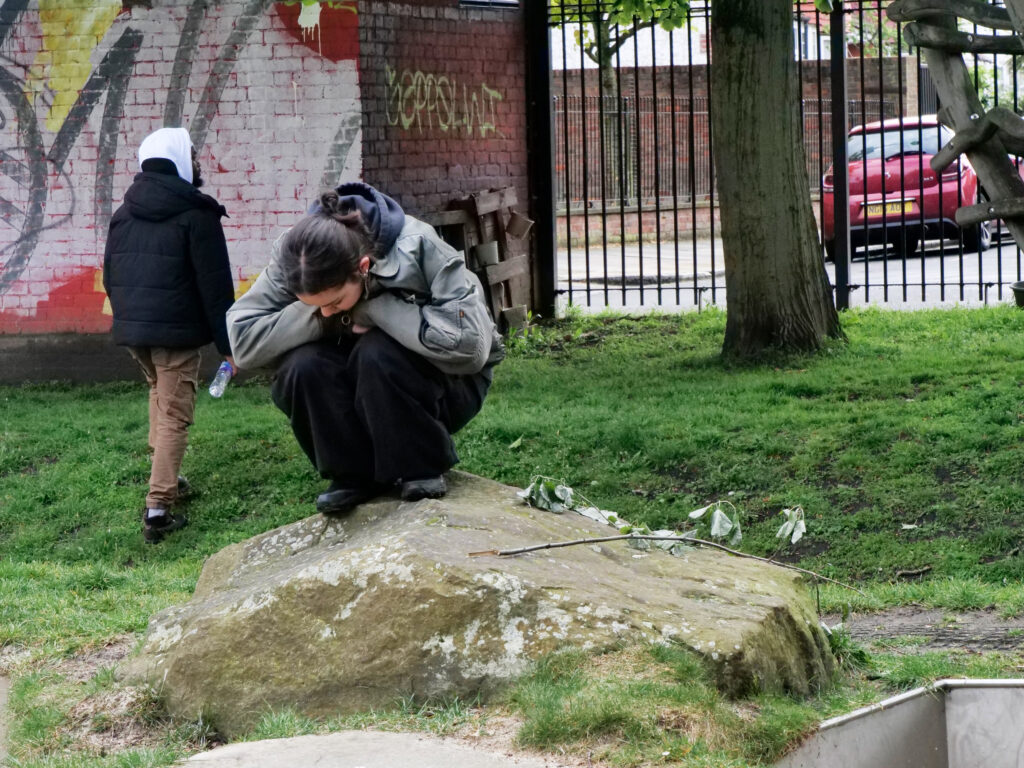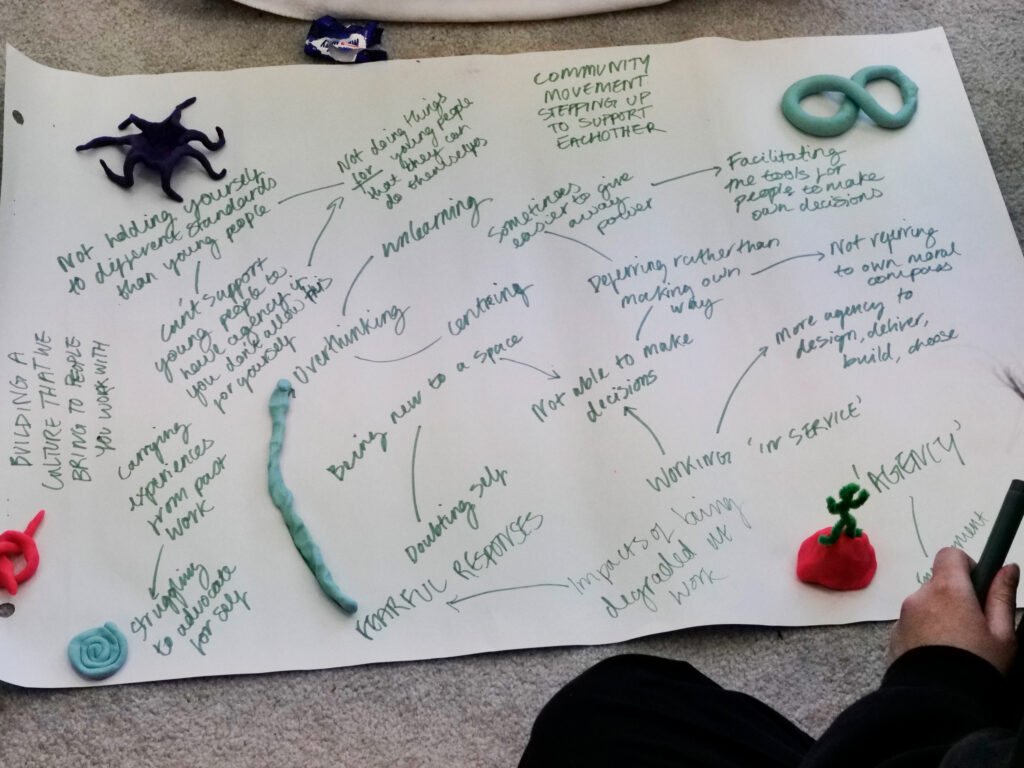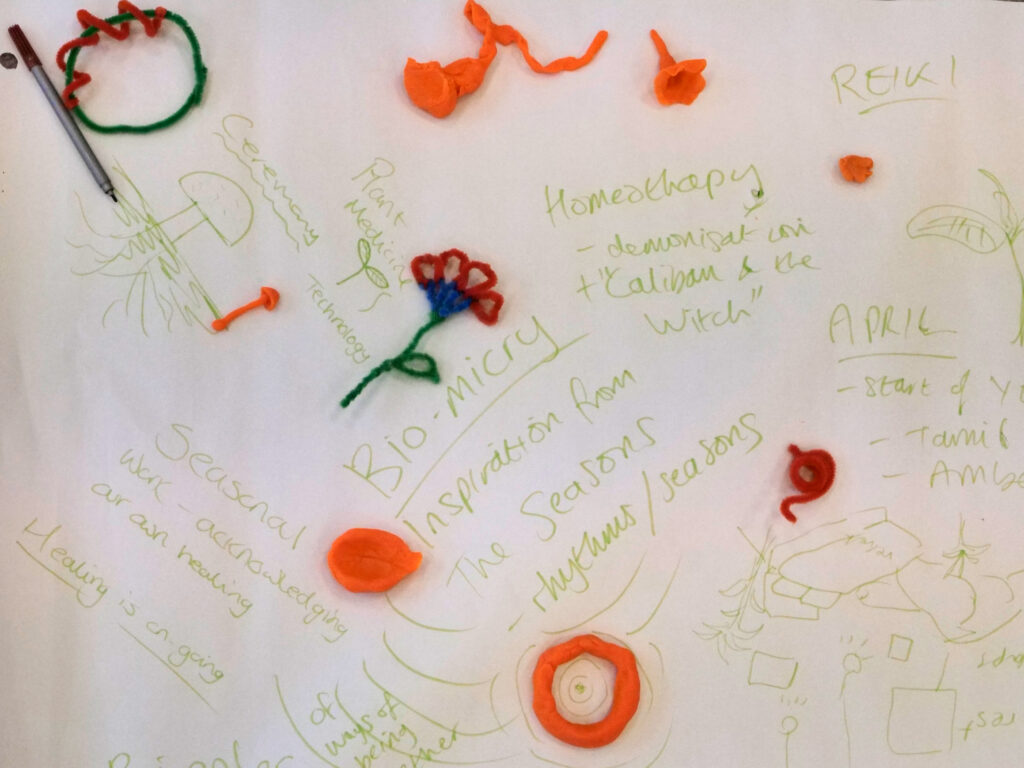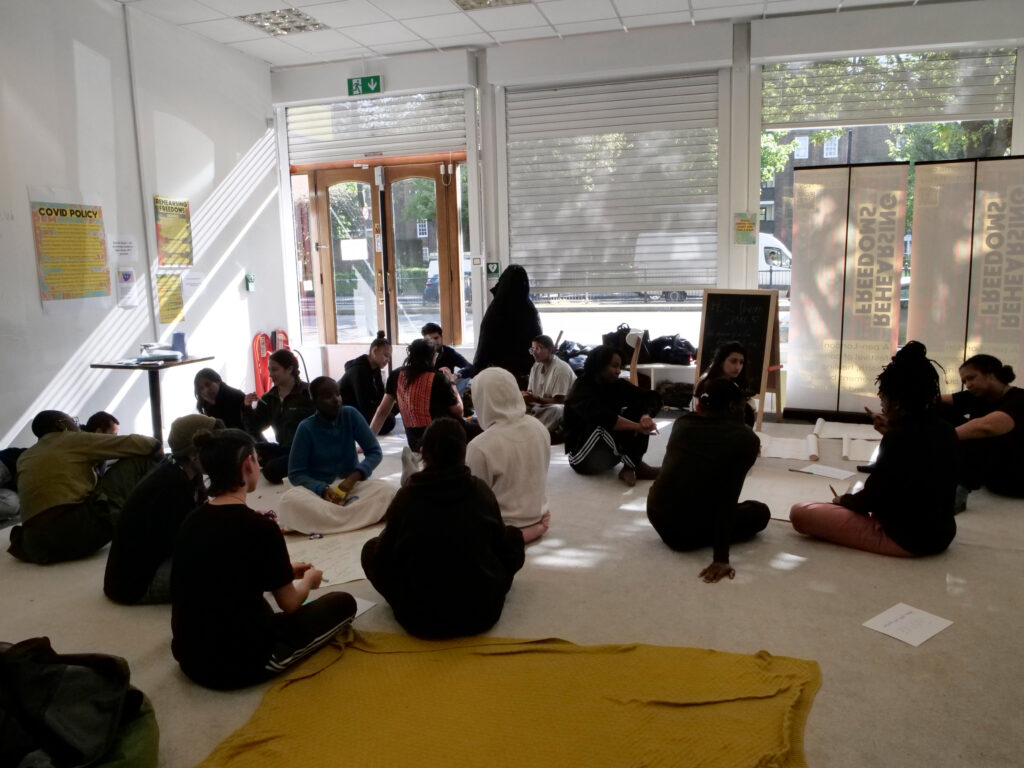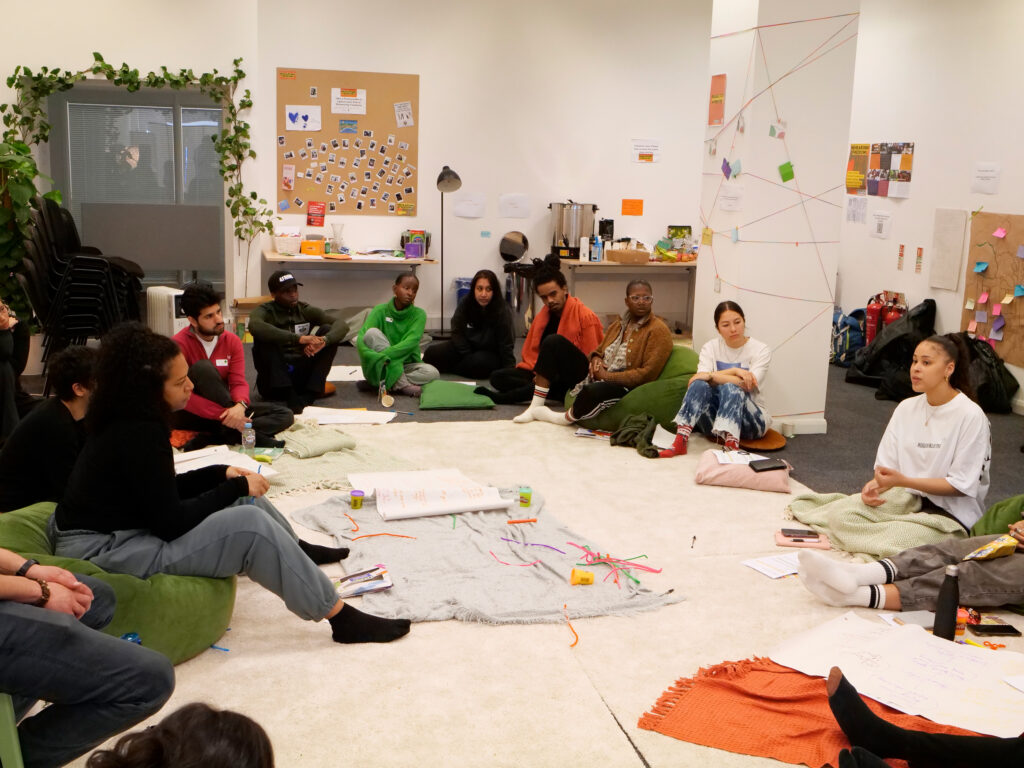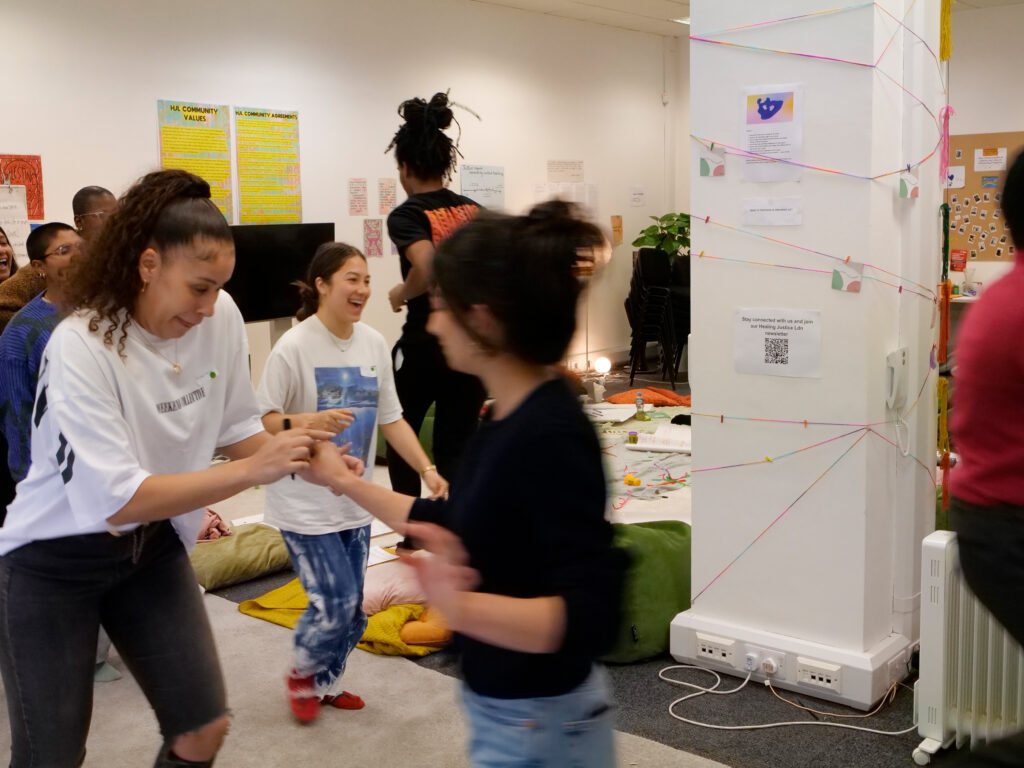On Saturday 27th and Sunday 28th April we were delighted to run our first edition of “Safe Yeah?”, a free weekend course on radical youth work for People of the Global Majority.
Shake!’s history originated with running courses for young people, and it felt like passing the baton to transition into a position where we were able to support others in their work with young people. Participants included people working in radical youth organisations like 4Front and No More Exclusions and organisations we have a lot of love for, such as MAIA; Wharf Chambers Radical Lending library; Civic Square and youth workers with decades of experience and youth workers with focus on areas such as trans youth; youth clubs; creative practice for young people and schools.
After welcomes, introductions and co-creating community principles, Annick and Sai facilitated a session on youth work backstories, exploring how the experiences of the course attendees shaped their roles as youth and community workers. This included looking at their relationships to institutions, cultural practices and models of care, with Annick highlighting “What we have access to is just as important as what we don’t have access to.”
In our focus on the prompt ‘family’, MAIA’s team talking about their work with MAIA’s yard – an intentional environment that feels like home, with food, conversation and love, to replicate a Caribbean yard. Other participants reflected on wanting to be the help that would have been useful to them as a young person, and working to support families in a time of punitive measures and scarce resources.
Discussing ‘ends’, a participant from NME reflected on the politicised nature of our institutions that can make us feel shame “For people who grew up in ends, we’re each other’s survival mechanisms – we create a community within. we don’t need NGOs and institutions to save us – we save each other. Growing up in ends is what politicises us. Seeing police in schools,in spaces that should be nurturing. You become the problem, rather than these systems. We feel shameful of growing up in ends as a result.”
Throughout our courses, we embody the pedagogies of Shake!. We embodied ‘Centring Arts, Culture & Play’ through our Alphabet Attack game. This fun and energetic game is taken from our guidebook, and during this rendition, we focused on the theme of ‘Safe Yeah?’ with creative answers varying from ‘accountability’ and ‘boundaries’ to ‘team’ and ‘union’.
After a nutritious lunch from Maame’s Kitchen, we re-energised with a gentle movement activity, before Latifa Akay’s session on radical safeguarding and harm reduction. The session began with exploring people’s interests in radical safeguarding, with Shakers!’ answers focusing on not relying on broken systems; holding space and care in a hyper-reactive environment and responding to harm without creating more harm.
We focused on how we can enable cultures of best interest for young people. This included:
- Asking for permission from young people e.g not ‘tell me why you’re upset’ but ‘would you like to tell me?’
- Moving away from “trauma informed” to “condition informed” – focusing on what specifically the trauma looks like in that young person and how it manifests to have more of an understanding
- Encouraging group decisions with the young people, such as them being part of the interview panel for people that will be working closely with them
The session also explored relationships of trust vs relationships of surveillance and used a movement activity to focus on the purpose of feeling internally centred.
Like in previous courses with Latifa, we also focused on relationships of trust vs relationships of surveillance, using extracts from the Radical Safeguarding Handbook. People reflected on relationships of surveillance, such as being expected to extract data from young people to ‘prove the value’ of their youth work/projects; the impact of shame; and how safeguarding can encourage us to dispel our human responses to things.
Latifa highlighted that “Risk itself is a construct and is weaponised in safeguarding. PREVENT and the gangs matrix are pre-crime spaces anticipating risks. Risk is not a neutral thing.”
A movement activity by Alex Augustin and Latifa helped us focus on the purpose of centring and working to feel internally centred. Partnered with another participant, Shakers! practised walking towards someone, saying yes or no depending on how they were feeling. Alex spoke about how this activity helped us to understand the difference between reacting and responding; focusing on somatics and think about how we can move into a centred place with safeguarding. Participants spoke about how the activity helped them to explore understanding how we feel more, and why, even if it doesn’t feel good, like if it’s centred in grief and anger.
We closed out day one with some time for silent reflection; closing reflections together and a grounding ritual.
After we welcomed attendees back on day two, the first session of the day focused on action planning with Latifa. We reflected on our contemplations from the day before and what we’d like to implement. Ideas that emerged included retreats and residentials for young people; using the radical safeguarding handbooks to encourage a more abolitionist approach; encouraging staff coalitions; encouraging embodied principles about autonomy which can be transferred through boxing, nature.
Our next session focused on what sustains our work vs what limits out work, opening with the background and history of Shake! Using our research report, and partaking in some collective reading. This included highlighting our conscious decision to not focus on quantitative data like employability statistics of people who have attended our courses. This led to an impromptu discussion, with questions about funding radical youth work. The conversation included finding funders who don’t fund harmful projects elsewhere; sharing experiences; shifting the power of the relationship with funders and funders only being interested in certain projects once it appears to be cool and on trend.
After another delicious lunch from Maame’s Kitchen, Alex Augstin facilitated a session focused on moving with intention, using muay thai. Jeffrey from NME also supported this movement session through leading a quick boxing exercise. The boxing helped to inject some energy into us and the room, while the muay thai brought a calming mood, with both helping to understand an embodied sense of safety. The underlying lessons felt resonant of our guidebook exercise, “Where Does This Live In My Body?” We examined our reflections on these exercises, with participants talking about how, historically, men are more encouraged to do boxing and martial arts while people socialised as women are not encouraged to recognise the strength in their body, and are guided more towards talking. Alex reflected on this, explaining “Having an understanding of our embodied relationship to power helps reject the stereotypes people might have. Everyone has a relationship to patriarchy, so it’s an opportunity to disrupt and challenge that – patriarchal violence won’t keep us safe and manifests in different ways.”
Other participants spoke about how breathing, martial arts and movement connects to ancestral communications during oppression, which has kept us alive in many ways, and how martial arts can help develop people’s understanding of violence, by being more adverse to violence.
Next, we ventured into nature nearby, with some participants going to the park, while some remained in the Dream Space to do some silent reflection. In the park, we gave a prompt of focusing on our senses, and noticing what was neglected around us. After 30 minutes, we had discussed what we’d noticed, with people focusing on colour, the weathering of surfaces making people think about lichen and its lengthy life span. Annick’s reflections were on how “things are falling apart that are essential to the community. Society values innovative, new things but we’re fighting for the things that already exist – the necessary work like tidying up the space and keeping the lights on.”
In our last session of the day, we mapped out how we could centre healing, creativity and agency in our daily work, projects and organisations, with people focusing on the prompt they needed, or were most drawn to. We did this in small groups, with some creative materials like pens, play dough and pipe cleaners. Centering these areas included thinking about relationships that we want to develop; how we extend these areas to those around us, including outside of youth work.
Thoughts around creativity included the constraints that come from organisational pressures which make creativity hard to enact; working in a way where somatics is part of the creative process and facilitates healing with young people; using creativity to help understand the emotions of young people; realising you can claim something as art/creative and how art comes in all different forms.
The prompt of healing led to analogies on nature, and its seasons, and how we can incorporate nature’s season of rest to fight against oppression in a different way; the natural rhythms of nature and the structure of how time is conceived and divided into 12, which isn’t aligned with nature’s calendars (such as menstrual and lunar). The link between nature and healing also included how we can heal through plants, and the thinking about plant medicine as technology, which helps us return to ancestral practices, and how that can be integrated into the work with young people. People conversed on how healing is a life-long necessity, and not just tending to something that has/will happen, like in safeguarding.
The group focused on agency considered how agency has been taken away from us, and how we can build and cultivate that in a world that doesn’t allow for that. This included past experiences, including in employment, can carry through and impact them; about feeling disempowered when connections to young people can be weaponised; about the tools from this weekend would help them to advocate for themselves. They thought about how we can build a culture of choice and honesty – taking breaks to show young people that it’s possible and being honest about when they’re tired helps to also recognise the heaviness of what young people are going through, and thought about their own experiences in youth clubs.
Across these groups, they’d used their creative materials to create a strong child to represent agency; flowers for nature; wiggly arms to represent flexibility and fluidity; an animal with multiple tentacles – something attacking you that you couldn’t even imagine to represent oppression. Infinity sign – energy always being present and just need to let it go – infinite possibilities.
To close out the day and weekend, Annick led us through a beautiful, calming grounding exercise, where everyone laid on the floor with their eyes closed, encouraging people to “Notice how we feel in our bodies. How does our bodies feel about the word ‘safe?’” We were encouraged to imagine safety pouring us. As Annick closed out the exercise, she said “Shake stays with you – it’s like the moon in the day, but it is here.”
Participants shared their final reflections. Across the weekend, reflections had included feeling more positive and confident about their work; seeing the beauty of things on an interpersonal level; learning and working together with other participants. Wrapping up the weekend, people shared the weekend feeling calming and prevening isolation; helping to remember the intentions behind their work; their desire to connect with others in the room on mutual projects and people expressed gratitude for everyone in the room. Shakers! enjoyed the possibility of a future check-in, and interest in skill and resource sharing.
We also echo the feelings of beauty on an interpersonal level, remembering the intentions behind our work, learning and appreciate the opportunity to have connected, and continue connecting with these attendees.

